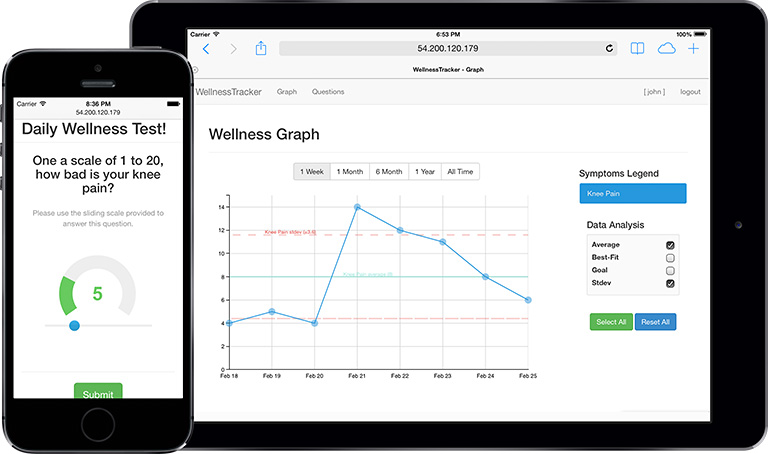Student Teams Cap Real-World Problems
When a child is being treated for a chronic disease, the symptoms – the day-to-day physiological effects felt by the child – are invaluable indicators for the medical professionals involved.
But proper tracking means consistent updates, and keeping a daily journal the ‘old way’ – pad and pen – can be difficult enough in this digital age and even more so when the child is feeling sick or when new medicines are introduced into the treatment regime.
Journal entries are also subjective, hard to quantify and can’t track the fluctuations in real time. Until the child and parent meet the doctor as per the treatment schedule, the doctor has no firm grasp on what’s going on and relying on ‘old’ news means being reactive.
But thanks to an inquiry from the BC Children’s Hospital and UBC Department of Electrical and Computer Engineering and its ongoing Capstone Design Course initiative that assembles student teams to solve real problems, the old way of sharing information between child/parent and doctor has gone digital, immediate and proactive.
Known formally as the ‘Empowering Children and Families with Information Technology’, the trademarked Wellness Tracker (WT) is a sophisticated app, usable on tablet, computer or mobile phone and which allows patients to rank the variety of symptoms unique to them and preselected by the doctor.
Created by the student team of Andrew Diemer (Biomedical), Ryan Liu (Computer), Nikola Radoicic (Computer) and Haleh Rezaei (Electrical), the Wellness Tracker is now undergoing trial use under the guidance of Dr. Jean-Paul Collet, associate head of research, UBC Department of Pediatrics and director of quality and safety evaluation at BC Children’s Hospital.
Designed to be ‘easy, interactive and exciting to use for children and their parents’, the tracker and its secure web portal allows the doctor, child and parent to visualize and track the data over time and is always immediately at hand.
“So it’s not used as more of a diagnostic tool but more as a way to track the ‘day-to-day feelings’ of the child,” says Capstone overseer and team advisor Dr. Purang Abolmaesumi.
For example, when prescribing a new drug and no matter how methodical the paper journal, Abolmaesumi says “the doctor has no idea” of the child’s ongoing reaction until the next scheduled face-to-face visit: “So what this does is it allows a kind of a semi-quantitative measure of how the child feels throughout the treatment.”
Back at BC Children’s Hospital, Collet likes what he’s been seeing: “The key features of WT is to provide real-time key information regarding the patient’s life on a daily basis. This fits well with the physicians’ clinical practice reasoning and fulfills an essential need of care providers. This makes WT a potential precious companion to support personalized care and treatment.”
It’s also but one of many Capstone Design Course projects.
Launched in September 2013, the eight-month innovative course divides the class into teams of four and “puts out a call to the community for projects.” Last year the community responded with about 90 candidate projects; 46 were selected and distributed among the 180 students, each four-person team working with a community partner.
In the coming academic year Abolmaesumi expects another 100 students to enroll in the course and as the good word gets out, a lot more community participation and proposals: “It’s very nice to see that we are actually reaching out to the community and we had a lot of happy clients.”
Read more about
Student LearningRead more Student Learning stories:
Related Content

Campus
Vancouver“The key feature of the Wellness Tracker is to provide real-time key information regarding the patient’s life on a daily basis."